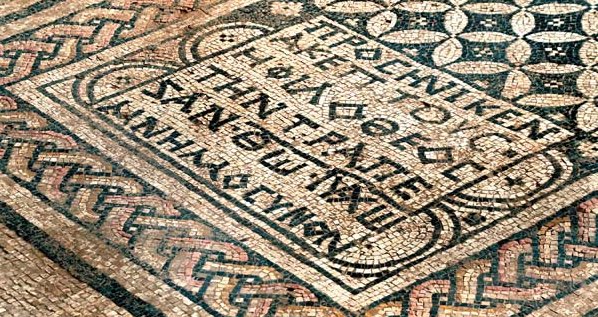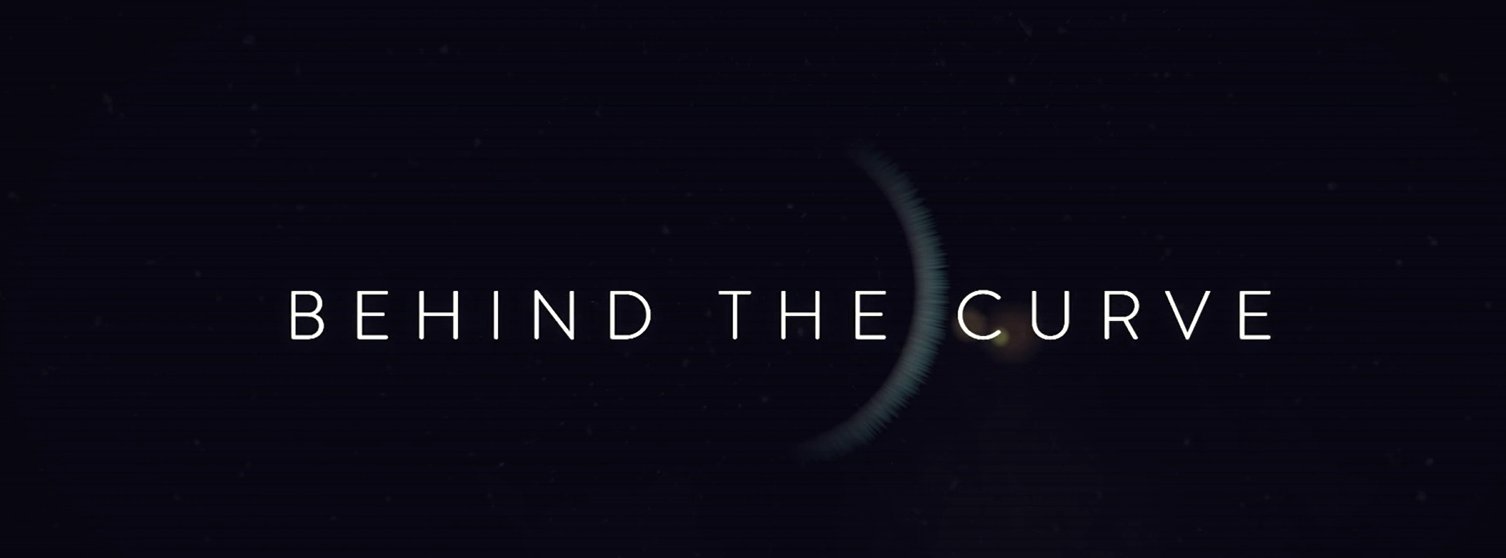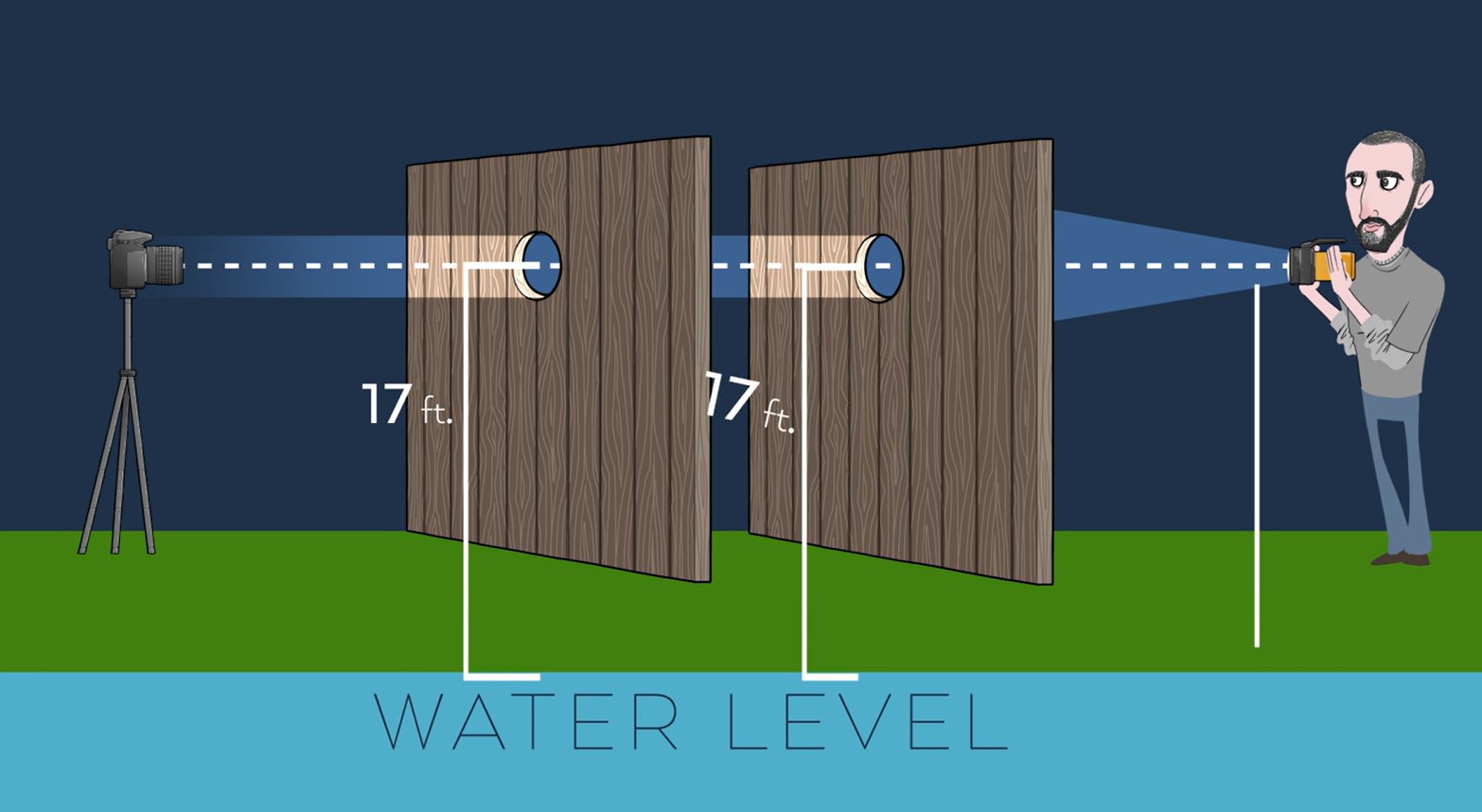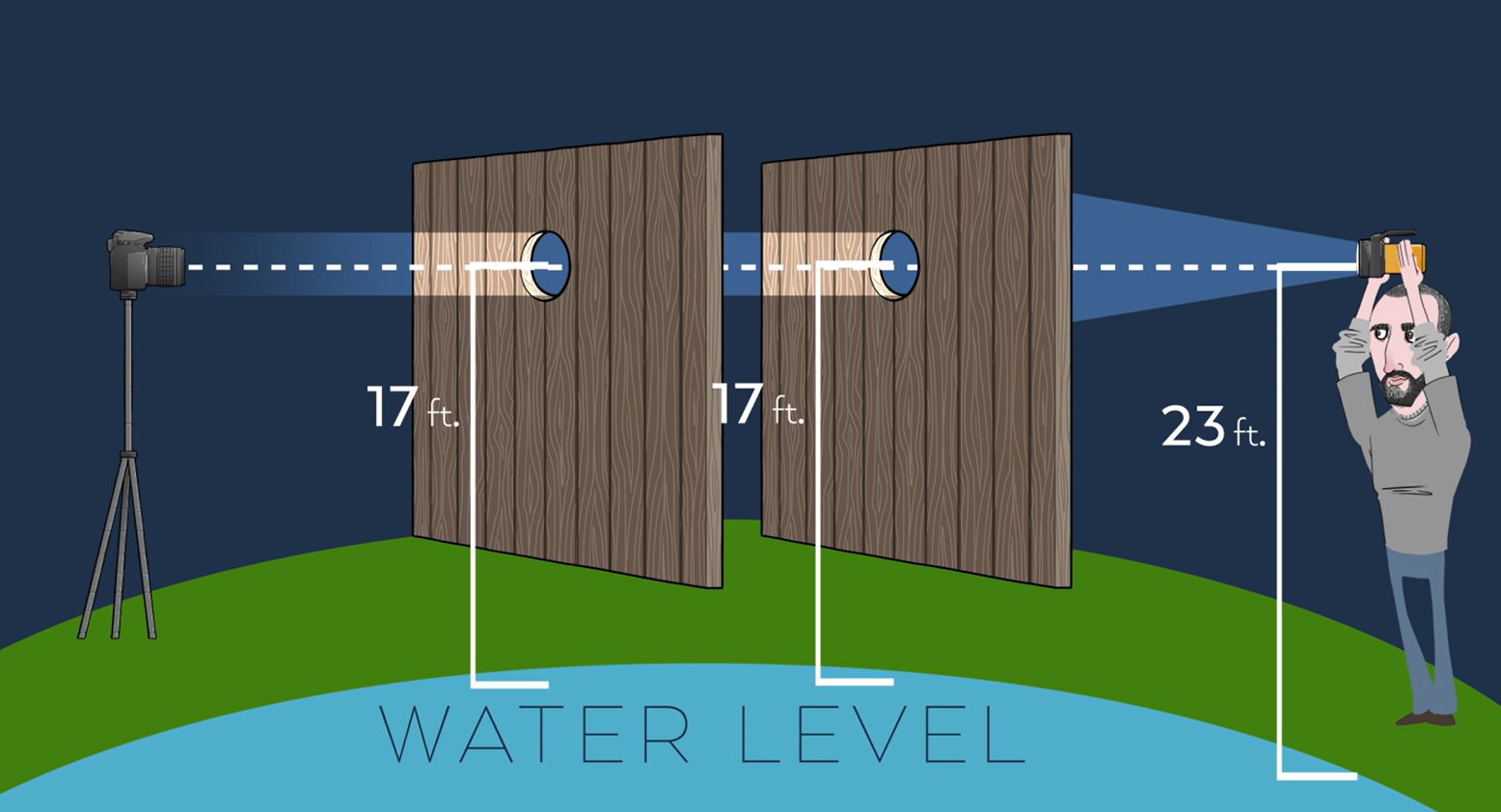I have written about the concept of a flat earth several times before (here, here, here, here, and here). Since before the time of Aristotle, most philosophers understood that the earth is a sphere. In fact, Eratosthenes was able to measure the circumference of the earth’s sphere around 240 BC. Thus, the idea that most ancient scholars thought the earth is flat is a complete fabrication.
Before Christ was born, even uneducated sailors knew the earth is round, because they saw something that I happened to witness myself two days ago. I am currently on a Thanksgiving cruise. Saturday, however, I was sitting on the beach. I spent most of my time reading, but I would look up from time to time to take in the view. One time, I saw this:

This picture was taken using the maximum zoom on my Android phone (30x). All of the pictures you see in this post were taken with the same camera at the same zoom setting. What is that? You might think it’s an offshore oil rig or something, but I knew it hadn’t been there the last time I had looked out at the ocean. Thus, I knew what it was – the top of a ship. So I continued to take pictures of it as it moved to my left and towards shore (where the port of Ft. Lauderdale is). After a while, here is what I saw:

Notice that now you can see more of the rigging on the top of the ship. After a while, even more appeared:

Now, even more is visible:

Even more:

And now you see most of the ship’s hull:

Now please understand that I could see this with my eyes as well. However, the camera isn’t as good as the eye, so the zoom was necessary in order to get pictures.
This is why even uneducated sailors understood the shape of the earth before the birth of Christ. They could see a ship’s mast before its hull when it came towards shore, and they could see its hull disappear before its mast when it moved away from shore. Only the curvature of the earth’s surface could explain this. On a flat earth, you would see the entire ship ship seem to grow larger as it approached. Alternatively, if it was sailing away, you would see the entire ship get smaller and smaller until it was too small to see. On a round earth, however, the bottom of the ship is under the curve of the horizon, so you can’t see it. The farther the ship is from you, the larger the portion of the ship that is hidden by the curve.
It doesn’t take any modern technology to understand the shape of the earth. You just have to be observant, like the ancient sailors were.
NOTE: Someone I respect suggested I should add a note about the Rayleigh Criterion, because some flat-earthers use it in an attempt to explain the photos shown above. Not surprisingly, only someone who doesn’t understand physics would do that. This article shows why the explanation doesn’t work.











